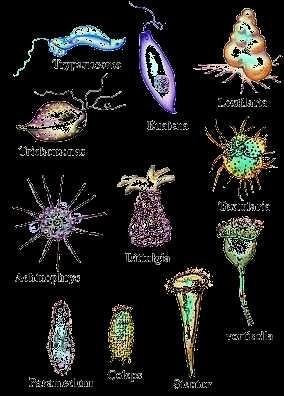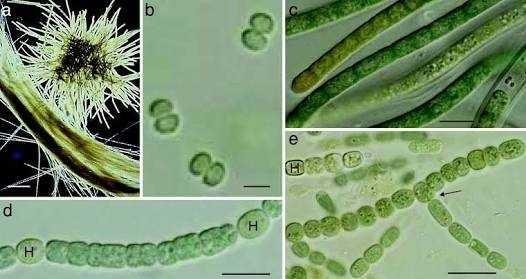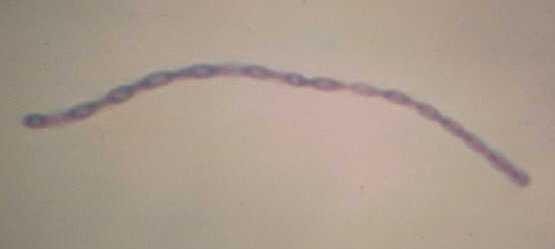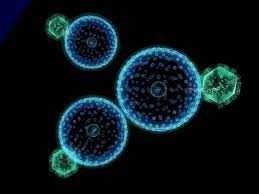EVERYDAY BIOLOGY. PHASE vii...
KINGDOM MONERA
This group contains very simple and microscopic organisms with prokaryotic cells that lack organelles and nuclear membrane. The group can be divided into three divisions. Cyanophyta, Schizophyta (bacteria) and viruses.

- CYANOPHYTA
This contains primitive fresh water organisms that lack plastids but have chlorophyll (a green pigment) and phycocyanin (a blue pigment). Their cell wall is made up of cellulose, but Carbohydrate is stored as glycogen. There is no sexual reproduction in them. They are commonly unicellular or filamentous with cell protoplast differentiated into a peripheral colored zone and an inner colorless portion containing nuclear materials. The blue-green algae like Gleocapsa (unicellular or colonial), Rivularia, Nostoc, Oscillatoria and Anabaena which are all filamentous to this group.

SCHIZOPHYTA
AThis comprises of the bacteria got the name derived from their ability to constantly break-up or divide into new individuals. They are the smallest and most primitive cellular organisms. They are single-called and have varied shapes. They cell wall of bacteria is made of cutin and the bodymay be provided with one or many cilia. They are motile or non-motile living anaerobically. Bacteria occur in great number and they are present everywhere in water, air, soil, foodstuff, fruits, vegetables, and so on. There is no sexual reproduction in bacteria rather they reproduce only asexually by fission at an enormous rate. At the minimum rate of division, a bacteria cell may produce over 16,000,000 offspring within 24hours.
On the basis of shapes and arrangement, bacteria can be distinguished into the following groups:Cocci bacteria are spherical or round in shape. Irregularly arranged.
Cocci are called staphylococci while those in chains are called streptococci.Bacilli bacteria are rod-shaped and they include Clostridium, Bacillus and Mycobacteria. If these occur in chains they are described as streptobacilli.
Commas are bacteria with slightly curved shape appearing like a comma. For example vibrio cholerae.
Spirilla and spirochetes are spiral or wavy bacteria e.g. Spirillum and Spirochaete.
A bacterium simply consists of a mass of cytoplasm covered by a firm cell wall with neither cellulose nor chitin present. The cytoplasm lacks vacuoles. Nuclear materials is present, but not in definite nucleus (no nuclear membrane).

VIRUSE
Viruses are very minute microorganisms that can not be seen under the highest magnification of ordinary microscope. They are visible through the electron microscope. They are easily recognized only by the disease which they cause in living organisms. They live and multiply only inside living tissues, but they become lifeless outside living tissues, the body of a mature virus or viron is made up of protein coat enclosing a nucleic acid either ribonucleic acid (RNA) or deoxy ribonucleic acid (DNA). Viruses occurs mainly I'm three shapes.Spherical e.g. poliomyelitis and influenza viruses.
Rod-shaped e.g. tobacco Mosaic virus.
Tadpole-shaped e.g. bacteriophages.

Congratulations, your post had been chosen by curators of eSteem Encouragement program. Feel free to join and reach us via Discord channel if you have any questions or would like to contribute.
Thank you for using eSteem
CREATING YOUR PROFILE IS EASY! JUST FOLLOW THE STEPS HERE ☜(ˆ▿ˆc)
You can trade your earned credstars for SBD!